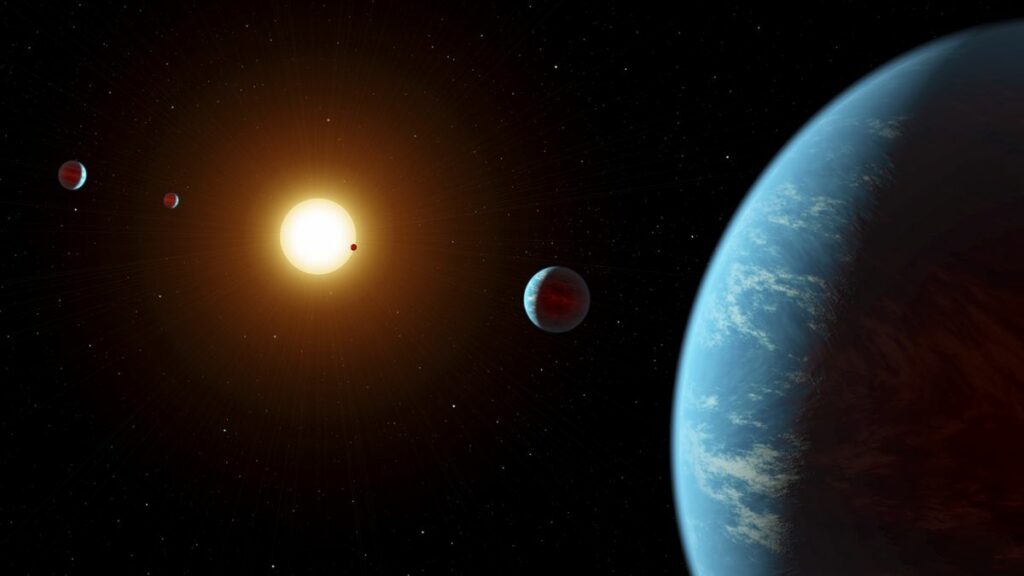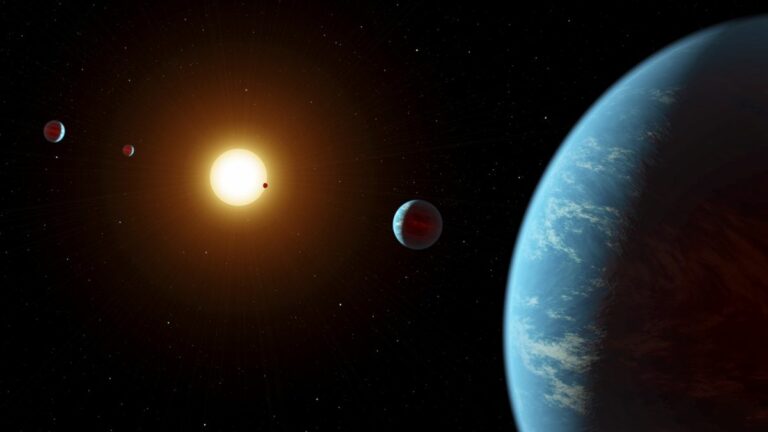The Enigmatic Phenomenon of Planetary Contraction: Unraveling the Mystery Behind the Shrinkage
NASA scientists have been pondering a collection of planets exhibiting signs of contraction, and the prime suspect behind this phenomenon appears to be radiation.

Diverse worlds populate the realms beyond our solar system. Exoplanets, distant alien entities, vary widely, ranging from gas giants resembling Jupiter to rocky orbs comparable in size to Earth, and even “super-puffs” with a density reminiscent of cotton candy.
However, there exists a perplexing void in the region where one would anticipate finding planets with dimensions approximately 1.5 to two times the diameter of Earth.
A mysterious gap where there should be planets
Among the 5,000-plus exoplanets unearthed by NASA, a multitude falls into the super-Earth category, measuring up to 1.6 times the width of our planet, as well as the sub-Neptune category, spanning approximately two to four times Earth’s diameter. However, there is a conspicuous scarcity of planets occupying the intermediate range.
According to Jessie Christiansen, a research scientist at Caltech and the science lead for the NASA Exoplanet Archive, this absence is not happenstance; there appears to be a systematic impediment preventing planets from achieving or maintaining sizes within this specific range.
Scientists postulate that sub-Neptunes undergo a reduction in size, shedding their atmospheres and swiftly traversing the size gap until they reach the dimensions of a super-Earth.
In her latest research, Christiansen proposes that these planets contract because radiation emitted from their cores expels their atmospheres into space. The findings, published in The Astronomical Journal on Wednesday, may offer a resolution to the mystery of the absent exoplanets in this particular size range.
The planets themselves may be pushing their atmospheres away
Exoplanets that are undergoing a reduction in size may lack the necessary mass, and consequently, gravity, to retain their atmospheres in close proximity.
While the precise mechanism driving the loss of atmospheres remains unclear, the new study lends support to a hypothesis known as “core-powered mass loss.” This concept involves a planet’s core emitting radiation that displaces its atmosphere from below, causing it to gradually detach from the planet over time.
Another competing hypothesis, referred to as photoevaporation, posits that a planet’s atmosphere dissipates due to the radiation from its host star. However, photoevaporation is believed to occur by the time a planet reaches 100 million years of age, whereas core-powered mass loss might transpire closer to the planet’s billionth birthday.
To examine these hypotheses, Christiansen’s team analyzed data from NASA’s retired Kepler Space Telescope, focusing on star clusters aged over 100 million years. Since planets are assumed to be roughly the same age as their host stars, the planets in these clusters would be old enough to have encountered photoevaporation but not old enough for core-powered mass loss.
The scientists observed that most planets in these clusters retained their atmospheres, pointing to core-powered mass loss as a more probable cause of eventual atmosphere loss.
However, Christiansen acknowledges that recent research suggests an ongoing mass-loss sequence where both processes may operate simultaneously. Therefore, the mystery remains unsolved.
As Christiansen noted in her statement, her research is ongoing, particularly as our understanding of exoplanets continues to evolve over time.
This article was originally published by Business Insider.
Do not forget to share your opinion with us to provide you with the best posts !




0 Comments